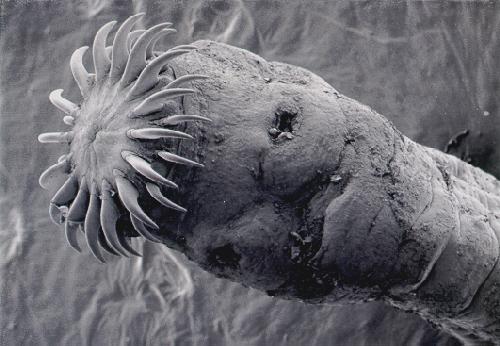by: Stephanie M. Halmo

An article published last week in the New England Journal of Medicine linked tapeworm infection and cancer through a novel disease mechanism. It was found that tapeworm cells could become cancerous in a human host. The article followed the case of a Colombian man with human immunodeficiency virus (HIV), a tapeworm infection, and cancerous lesions in his lungs and lymph nodes.
Curiously, the tumors were composed of small cells that did not appear to be human. The Centers for Disease Control (CDC) determined the cancer cells originated from the tapeworm, Hymenolepis nana, based on DNA analysis. Sequencing of the DNA from the cancerous cells revealed mutations comparable to those that cause human cells to become malignant.
Lead author of the article, Dr. Muehlenbachs of the CDC, suggested that in the HIV positive host, tapeworm reproduction was rapid. This quick growth of tapeworm stem cells, unchecked by the host's immune system, resulted in the mutations that allowed the tapeworm cells to become cancerous.
About the author
 Stephanie Halmo is a former middle school science teacher turned graduate student, actively pursuing her Ph.D. in biochemistry from the University of Georgia. In her spare time she likes to dance, volunteer at local schools and tie-dye anything she can get her hands on. You can connect with Stephanie on Twitter and Instagram @shalmo or by email: shalmo27@uga.edu Stephanie Halmo is a former middle school science teacher turned graduate student, actively pursuing her Ph.D. in biochemistry from the University of Georgia. In her spare time she likes to dance, volunteer at local schools and tie-dye anything she can get her hands on. You can connect with Stephanie on Twitter and Instagram @shalmo or by email: shalmo27@uga.edu |
About the Author
- athenssciencecafehttps://athensscienceobserver.com/author/athenssciencecafe/April 17, 2020
- athenssciencecafehttps://athensscienceobserver.com/author/athenssciencecafe/April 12, 2020
- athenssciencecafehttps://athensscienceobserver.com/author/athenssciencecafe/April 3, 2020
- athenssciencecafehttps://athensscienceobserver.com/author/athenssciencecafe/March 30, 2020







